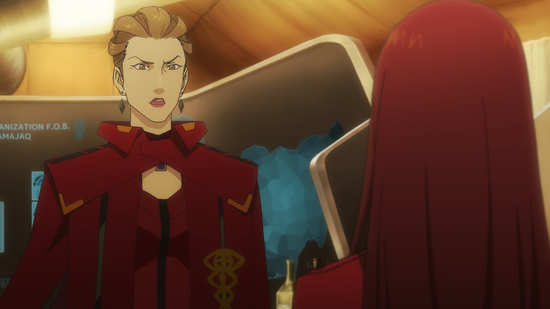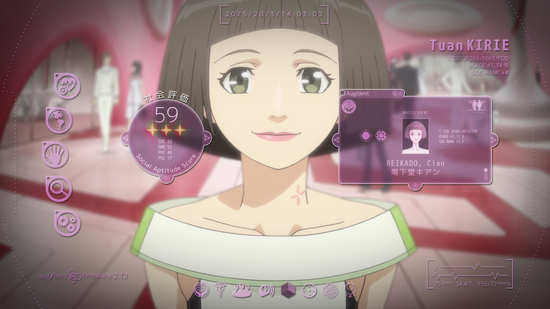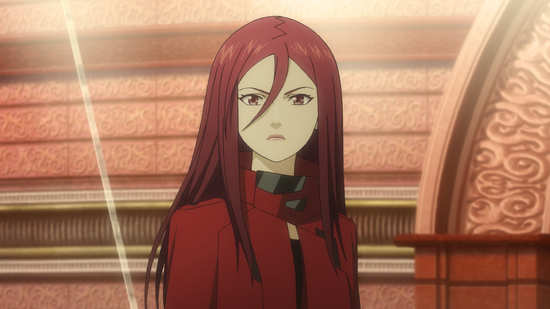Review for Project Itoh: Harmony Steelbook - Collector's Edition
Introduction
The next Project Itoh film is upon us, but I have to admit that my anticipation for it has waned somewhat following the first release, The Empire of Corpses. I’m always up for a little speculative fiction, especially stories those that follow the Philip K. Dick approach of giving society a little twist, and then extrapolating what would transpire. But The Empire of Corpses’ twist of a world where zombies become commodities didn’t quite hit the mark. Maybe the Harmony movie will hit the spot where Empire of Corpses didn’t. But as I’m often reminded, it’s all in the adaptation.
Death has been conquered. Advanced medicine and monitoring, means that illnesses are a thing of the past, and accidents can be dealt with. It means a society that fears death, which surrenders control of the body to the state at adolescence, when nanotechnology is administered that controls and defines the body’s remaining road to maturity. A person is also expected to follow the philosophy of Lifeism, where the body is considered the property of society, and it is incumbent to maintain wellbeing for everyone’s psychological good.
There’s not a lot of room for individuality and free will, a fact that resonated with three school-friends, Miach, Tuan and Cian. As a rebellion against society, they made a suicide pact, with Miach learning of a way to use the monitoring technology against itself. In the end, only Miach died, and thirteen years later, Tuan is now one of the monitors who oversees this medical utopia, although her approach to her work suggests less than reverence to the new ‘gods’ of Lifeism. When she’s caught trading advanced medical technology for illicit cigarettes and alcohol, she’s suspended from duty and sent back to Japan. There she’s met by Cian who is perky, bubbly, the perfect citizen, hardly the impressionable teenager from thirteen years ago. But Tuan is shocked when over lunch, talking about Miach, Cian picks up a knife and plunges it into her own throat. What’s even more shocking is that it coincided with an outbreak of suicides across the country, thousands of them. Tuan manages to get herself assigned to the investigation, but then comes the claim of responsibility and a demand, that people kill someone else, or their suicide will be triggered. It’s a demand couched in familiar words, Miach’s words...
Harmony is released as a Collector’s Edition on Blu-ray and DVD, comes in a Steel Box with a 16 page booklet and art cards. I’m just looking at the Blu-ray disc for this review. There is also a standard DVD only release.
Picture
Harmony gets a 1.78:1 widescreen transfer at 1080p resolution. The image is clear and sharp with strong consistent colours. The film has excellent detail, certainly telling in the world design, as well as the character designs. Banding is minimal, but there’s one scene with a swinging lampshade where it suddenly becomes obvious and distracting. The character animation is a mix of 2D and cel-shaded 3D CGI, with the quieter close up character moments traditionally accomplished, but most of the action sequences are digital. One nifty conceit is the Augmented Reality contact lens, which offers characters heads-up displays overlaying their world, offering info and data about objects and people (a bit like the Eden of the East system) but also a constant monitor of one’s own health at any time. As you might expect, there are a lot of P.O.V. shots in Harmony. However, the future utopia is pink. Seriously pink. It is one way to differentiate the utopia from the old world, but it looks awful and with absolutely no logic, the sky is pink in the future world, but blue outside it. It looks like a level of Candy Crush, and is one of the sillier ideas in the film, making the suspension of disbelief harder to achieve.
The images in this review were kindly supplied by All the Anime.
Sound
You have the choice between Dolby TrueHD 5.1 English and Japanese, with subtitles and signs locked to the appropriate audio track. Harmony certainly gives an effective surround experience when it comes to the film’s action sequences, ambience and music, and it is properly immersive as a theatrical feature should be. The dialogue is clear throughout, and the subtitles are timed accurately and are free of typos. The actors are certainly suited to their roles, but there aren’t any real stand-out performances, except for Shinichiro Miki as Elijah Vaslov, as he sounds like Shinichiro Miki in whatever he does. I gave the English dub a quick check to see if it exists, and it does, and there are no egregious accents to put me off the way Empire of Corpses did.
Extras
The disc autoplays a trailer for Funimation NOW and then boots to an animated menu.
There are a few extras on the disc, with a brief interview with voice actors Monica Rial, Jamie Marchi, Christopher Bevins, and Rachel Robinson about the film running to 6:02.
You’ll also find 3:24 of Promo Videos, the Original Trailer (1:14), and the U.S Trailer (1:52).
There are further Funimation trailers for The Empire of Corpses, Attack on Titan - Live Action, Psycho Pass the Movie, Seraph of the End: Vampire Reign, Maria the Virgin Witch, Blood Blockade Battlefront, and Tokyo Ghoul √A. Unlike previous Funimation discs which listed the trailers separately, these are presented in a single trailer reel.
Conclusion
That’s two Project Itoh films that I’ve now watched, and twice I’ve been disappointed. It’s not just the overwhelming pink colour scheme that puts me off, it’s the movie’s storytelling as well. That’s a shame as Harmony has a pretty decent premise to it, the idea of what kind of society would result from universal, and perfect healthcare, coupled with practical immortality. But it does get away without asking the difficult questions by means of a narrative cheat. It isn’t concerned with thoughts of Malthusian over-population, or the ennui of the immortal, the questions that usually get asked of such ideas. Harmony is for one thing set some fifty years after a global catastrophe, a Maelstrom that had some effect on reducing the world’s population, and the second thing is that its immortality is a relatively new science. While these people might conceivably live forever, you get the feeling that there aren’t too many old people around yet.
So instead we have a society of hypochondriacs, worshipping at the altar of Lifeism, the new mandated religion, where government is now called Admedistration, and the common good outweighs individual desires, your life is the property of the state, and must be preserved at all cost. When you live your life according to authoritarian dictates, then that is the end of free will, and it’s unsurprising that it’s the teenagers that rebel first and foremost. The only rebellion against life is death, which is where we meet our protagonist Tuan, failing at a suicide pact that claims the life of her friend. Actually we meet her 13 years after the event, rebelling in her own way as a sort of UN observer, trading immortality drugs for the addictive ‘death of booze and cigarettes, but it isn’t long before we flashback to her youth with Cian and Miach.
That’s the first problem that I had with the film, the way that it is structured. We follow Tuan’s story in the present day, interspersed with flashbacks to her school days with Cian and Miach, and it has the effect of slowing the film down, especially once the main storyline unfolds, and Tuan is investigating the death of Cian in the present day, and the spate of suicides that coincide. That really ties into the second problem that I have with the film, that of a lack of likeable characters. That stems right from the trio of Miach, Tuan and Cian, where Miach is obviously manipulative and controlling, who sees Tuan as her toy, and Cian as an appendage. She’s the one who comes up with the suicide pact, and if you can’t buy into their friendship, if you can’t accept her as the sort of leader figure that others will follow, then it becomes hard to buy into the story at all. That coupled with a romantic infatuation between Miach and Tuan challenges the suspension of disbelief more than the pink universe.
The premise may be good, but the story itself has issues. It’s certainly the case that the viewer will be ahead of the narrative, the identity of the ‘villain’ is apparent right from the off, while it also suffers from small universe syndrome, when Tuan winds up investigating her own father. There’s a bit of narrative irony at the end, where a problem provoked by the apparent surrender of free will to authority, is solved by the complete surrender of conscious free will, which could be taken as a cute development, while the film also ends on an ambiguous open-ended note (at least to those interviewed in the extras, I certainly didn’t find any ambiguity), which I suppose might be thought-provoking to those invested in the film. I’ve had the chance to review two speculative-fiction anime features in short order, and I have to say that the Psycho-Pass movie certainly does it right. As for Project Itoh, I hope something was lost in the adaptation, and that Genocidal Organ turns out better than Harmony or The Empire of Corpses.









Your Opinions and Comments
Be the first to post a comment!